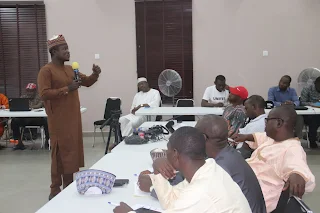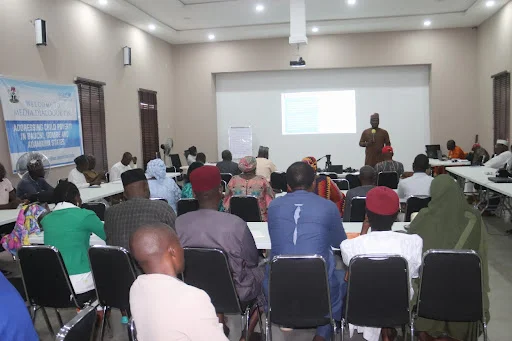From: Samuel Luka, Bauchi
A Social Policy Specialist with the United Nations Children's Fund (UNICEF), Bauchi Field Office, Dr. Yusuf Auta has identified corruption, unemployment, violence and activities of insurgents as some of the factors driving child poverty in Nigeria.
Dr. Auta made this known on Tuesday in a paper he presented on multidimensional Child Poverty in Adamawa, Gombe and Bauchi Field Office of the UNICEF during a 2-day Media Dialogue on Child Poverty at the Evolution Hotel Gombe state.
He added that, inadequate investment in social sectors, insufficient income, high cost of living Associated with raising children, including housing, food and fuel costs, inflation and subsidy removal are all contributory factors to child poverty.
Dr. Auta who explained that the drivers of child poverty is contained in a situation analysis of children in 2021, said that the children are faced with both dimensional and multidimensional poverty such as water, sanitation, housing, access to information, nutrition, education, health and child protection.
On his part, Dr. Ali Madina Dankumo of the department of Economics and Development Studies, Federal University Kashere in Gombe state, said bad governance also affects head of the households.
Dr. Dankumo who spoke on the effect of child poverty on socio economic development of Nigeria, said child poverty has affected the healthcare of the children negatively.
He said that the National Primary Health-care Development Agency (NPHCDA) in its 2022 data indicated that 67 million children lack access to healthcare in Nigeria.
Dr. Dankumo who noted that poverty prevents children from accessing quality education, pointed out that it also restrict social mobility of the children, thereby, creating room for crime and social unrest.
Our correspondent gathered that in 2022, NBS said Child poverty is prevalent in rural areas, with almost 90% of rural children experiencing poverty.
Across the geo-political zones, the child multidimensional poverty index (MPI) shows higher poverty in the North-East and North-West (where 90% of children are poor) and lower poverty in the South-East and South-West (74% and 65.1% respectively).















0 Comments